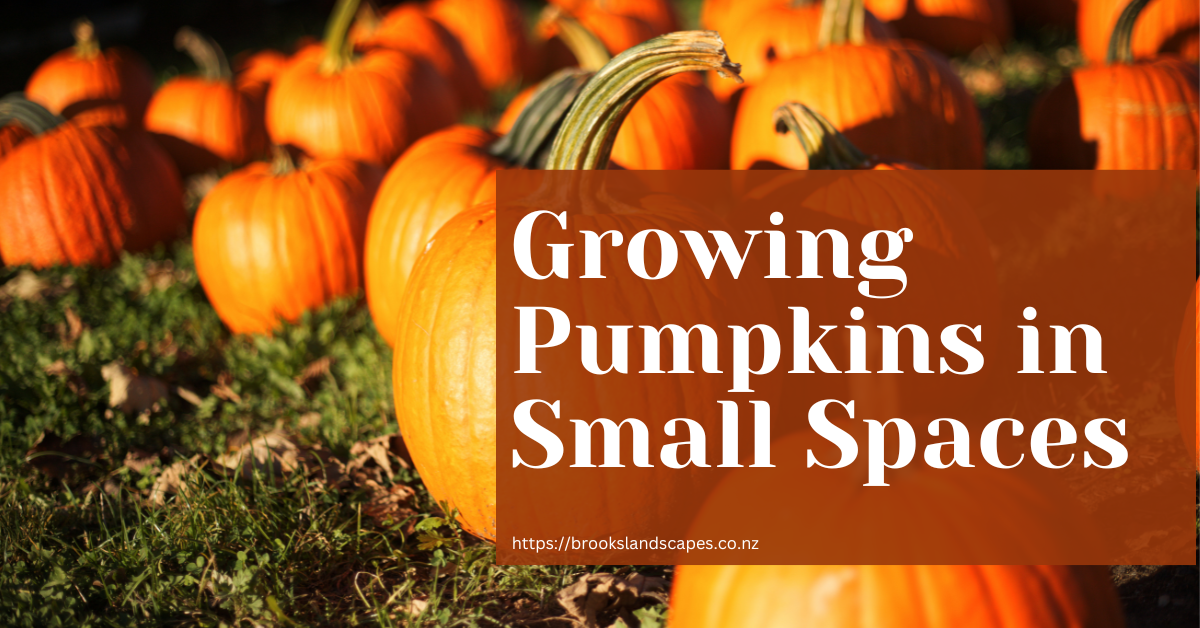
Growing Pumpkins in Small Spaces
Pumpkins are often associated with sprawling vines that require extensive garden space, but with strategic planning, they can be grown successfully in compact environments. Whether utilizing a balcony, small backyard, or container garden, a well-structured approach enables an abundant harvest. This guide explores practical techniques to optimize pumpkin cultivation in constrained areas.
Advantages of Small Space Pumpkin Cultivation
Contrary to common belief, pumpkins can flourish in limited spaces when grown with efficient methods. Vertical gardening, container planting, and raised beds enhance spatial utilization while maintaining high yields. Homegrown pumpkins provide fresher, pesticide-free produce and serve as a rewarding addition to small-scale gardens.
Optimal Pumpkin Varieties for Compact Gardens
Selecting the right variety is critical to success. Smaller, bush-style cultivars that require minimal space are ideal. Recommended varieties include:
- Jack Be Little: Compact, decorative, and container-friendly.
- Baby Boo: Small, white pumpkins that thrive in confined areas.
- Sugar Pie: A culinary variety well-suited for container growth.
- Wee-B-Little: A round, miniature option for patio gardens.
- Bushkin: A bush-type variety that minimizes vine sprawl.
Container Based Pumpkin Cultivation
Utilizing containers is an effective method for growing pumpkins in restricted spaces. For best results:
- Container Selection: Use a pot with a minimum 15-20 gallon capacity to support root development.
- Soil Composition: Employ nutrient-rich, well-draining potting soil supplemented with organic compost.
- Sunlight Exposure: Position containers in areas receiving at least six hours of direct sunlight.
- Structural Support: Utilize stakes or trellises to manage vine growth and maximize space efficiency.
Vertical Pumpkin Gardening
Training pumpkin vines to grow vertically optimizes space and enhances air circulation. To implement this approach:
- Trellises and Fences: Direct vines along sturdy trellises or fencing structures.
- Fruit Support Mechanisms: Utilize fabric slings to cradle pumpkins and prevent excessive strain on vines.
- Compact Varieties: Select semi-bush or small-fruit varieties to ensure manageable vertical growth.
Raised Bed Cultivation for Pumpkins
Raised beds provide a controlled environment for pumpkin growth while improving drainage and soil quality. Key considerations include:
- Soil Enrichment: Incorporate compost and organic matter to enhance fertility.
- Spacing Requirements: Allocate 18-24 inches between plants to facilitate proper development.
- Moisture Retention: Apply mulch to regulate soil temperature and suppress weeds.
Hydroponic Pumpkin Farming
For those with extremely restricted space, hydroponic systems offer an innovative approach. Essential elements include:
- Nutrient Delivery: Utilize a balanced hydroponic nutrient solution.
- Artificial Lighting: Supplement with LED grow lights if natural sunlight is insufficient.
- System Choice: Implement deep-water culture or nutrient film techniques for optimal results.
Essential Growth Management Strategies
Sunlight Exposure
Pumpkins require at least six hours of direct sunlight per day. In shaded or indoor settings, artificial lighting may be necessary to sustain growth.
Watering Techniques
Consistent soil moisture is vital, but excessive water retention must be avoided. Best practices include morning irrigation and mulching to preserve hydration levels.
Fertilization Schedule
- Apply nitrogen-based fertilizers during early vegetative growth.
- Transition to phosphorus- and potassium-rich nutrients once flowering and fruit formation begin.
Pollination Considerations
Pumpkins rely on pollination for fruit production. In small gardens with limited bee activity, hand pollination using a soft brush can ensure successful fertilization.
Vine and Growth Regulation
- Prune non-essential vines to direct energy toward fruit development.
- Restrict the number of fruits per vine to enhance size and quality.
- Train vines along trellises to conserve space and promote airflow.
Common Challenges and Solutions
Pest and Disease Management
Preventive measures such as maintaining air circulation and applying neem oil can mitigate common fungal issues like powdery mildew. Aphids and squash bugs can be controlled through manual removal or insecticidal applications.
Addressing Pollination Deficiencies
In the absence of natural pollinators, hand-pollination can be performed to ensure fruit development. Planting nectar-rich companion flowers can also attract beneficial insects.
Optimizing Root Space
Larger containers and frequent nutrient replenishment support root expansion, enhancing overall plant health in confined spaces.
Harvesting and Storage
Pumpkin maturation typically requires 90-120 days. Key indicators of ripeness include:
- Hardened skin resistant to puncture.
- Dried and withered vine near the fruit.
For optimal longevity, use a sharp knife to cut the stem, leaving a 2-4 inch portion intact. Store in a cool, dry location to extend shelf life.
Brooks Landscapes
Brooks Landscapes is a professional landscaping company in New Zealand, specializing in garden design, lawn care, hardscaping, and outdoor transformations. They provide high quality landscaping services tailored to enhance residential and commercial properties with functional and visually appealing outdoor spaces.
Conclusion
Growing pumpkins in restricted spaces is entirely feasible with the right techniques. Whether employing container gardening, vertical trellises, or raised beds, compact environments can still yield a productive harvest. By selecting appropriate varieties, managing growth efficiently, and addressing space limitations strategically, even the smallest gardens can accommodate successful pumpkin cultivation. Begin planning your pumpkin garden today and enjoy a rewarding homegrown experience.